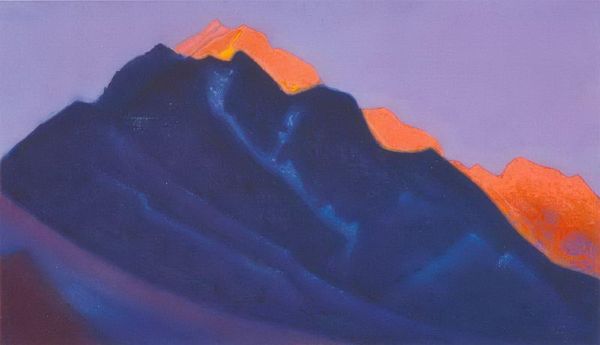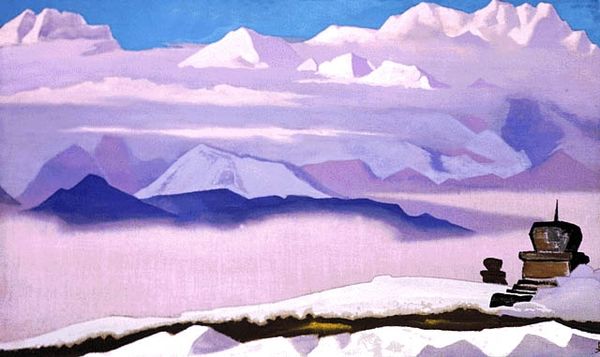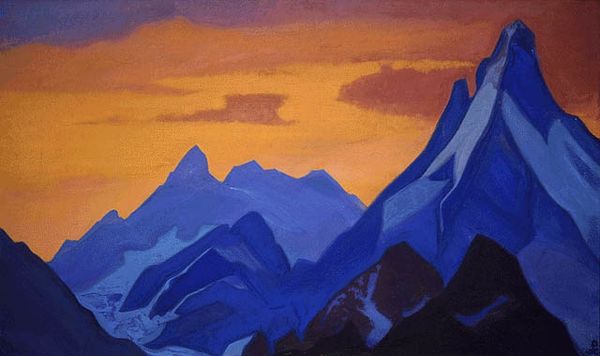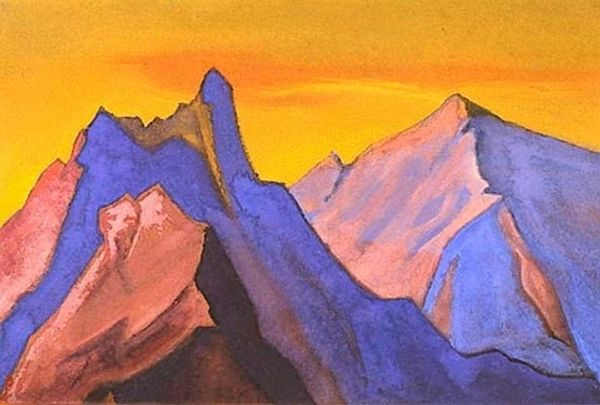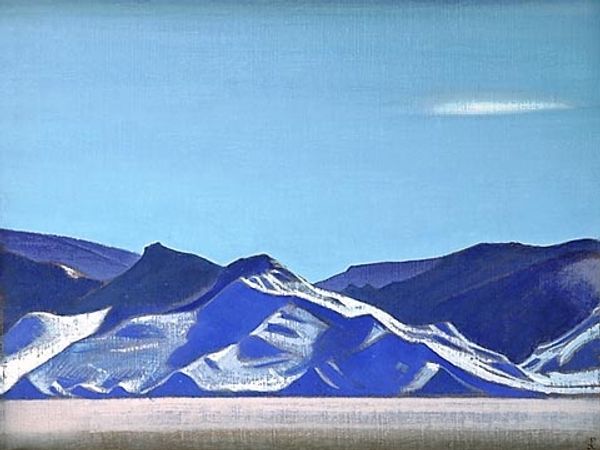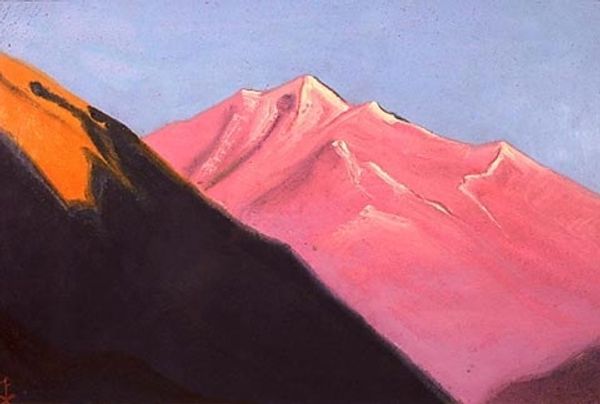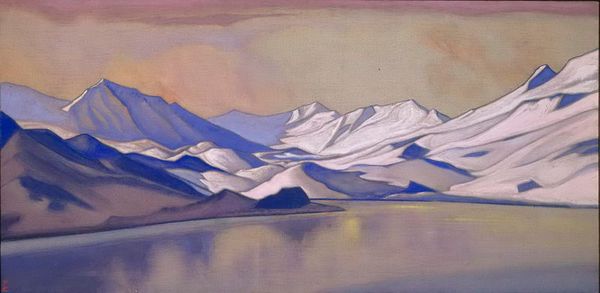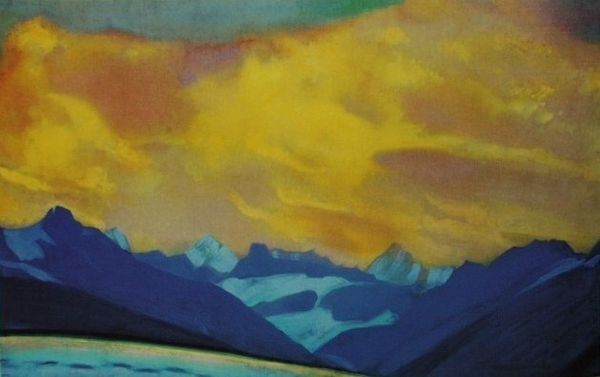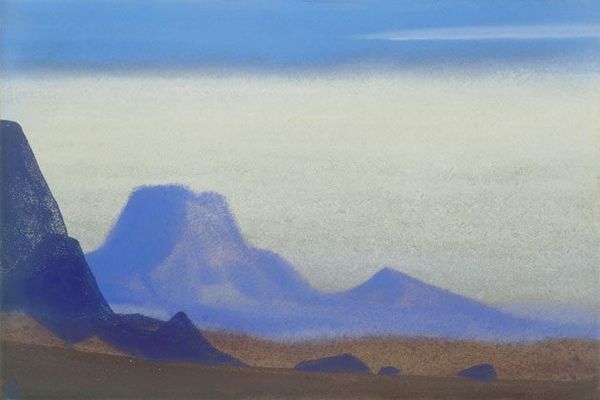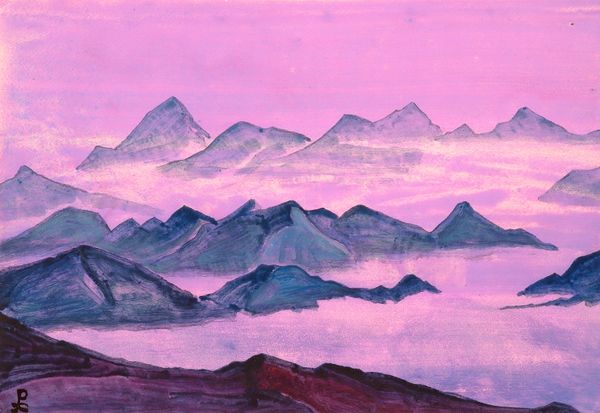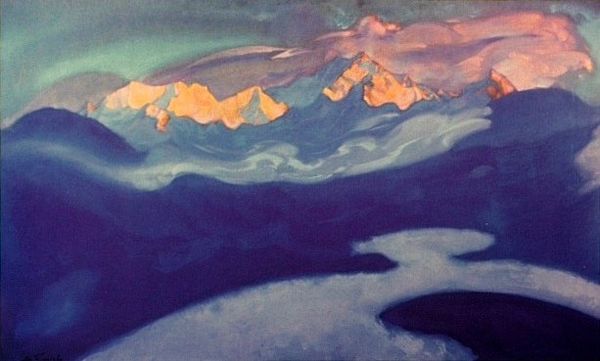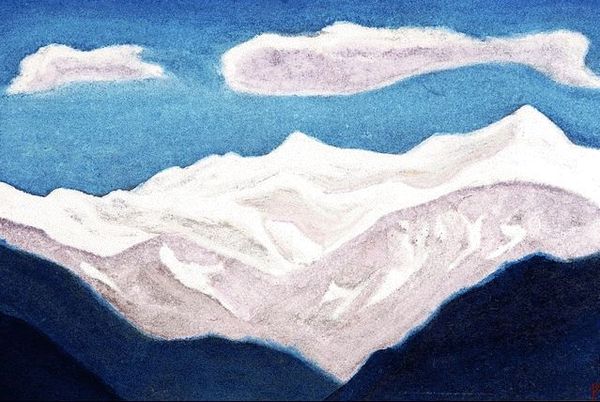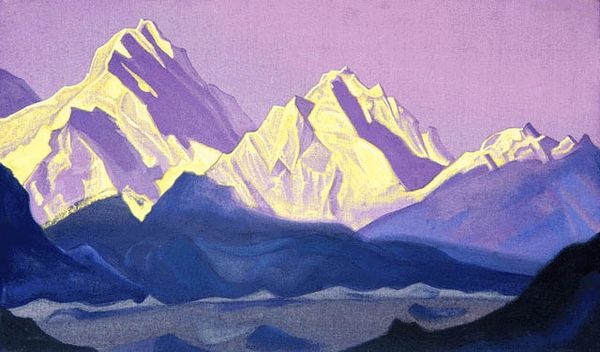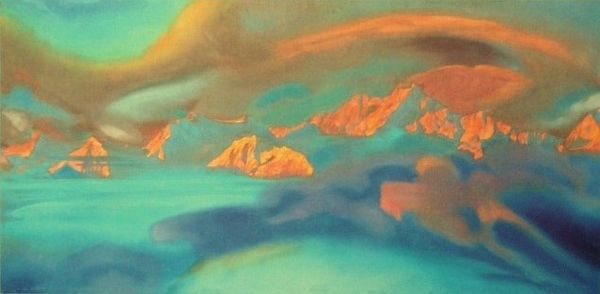
Copyright: Public domain
Curator: Before us is "Kangchenjunga," a 1938 tempera painting by Nicholas Roerich. Editor: It's so… ethereal. The mountains almost float amidst these hazy, layered hues of blue, gold, and lavender. The whole composition feels dreamlike, a beautiful wash of color. Curator: Roerich’s work is profoundly shaped by his spiritual and political beliefs. He dedicated much of his life to exploring and preserving the cultural heritage of Central Asia, particularly the Himalayas. This piece isn't just a landscape, it's a symbolic representation of spiritual aspiration. Roerich even founded the Banner of Peace movement, aiming to protect cultural sites during conflicts, inspired by his travels. Editor: I see what you mean about aspiration. Look at how he's used color – those peaks are radiant. Notice the almost geometric forms, stylized and simplified, that give the mountain range a monumental, timeless quality. He's moved beyond pure representation here. It’s closer to an idealized vision. Curator: Exactly! Roerich believed art could transcend cultural and political divides, fostering a universal sense of beauty and understanding. The Himalayas, for him, were not just geographic locations, but symbols of spiritual heights humanity could achieve. This imagery resonated with theosophical societies, influencing cultural perceptions of the East. Editor: Still, for all its cultural baggage, one can just appreciate Roerich's ability to blend and balance color so harmoniously. It evokes the feeling of cold and altitude; a majestic and lonely panorama. I find the atmospheric perspective really draws you in. Curator: His work definitely sits at an interesting intersection of the aesthetic and the political. Editor: Absolutely. And from an art historical perspective, there are so many entry points—it seems you can almost lose yourself.
Comments
No comments
Be the first to comment and join the conversation on the ultimate creative platform.
